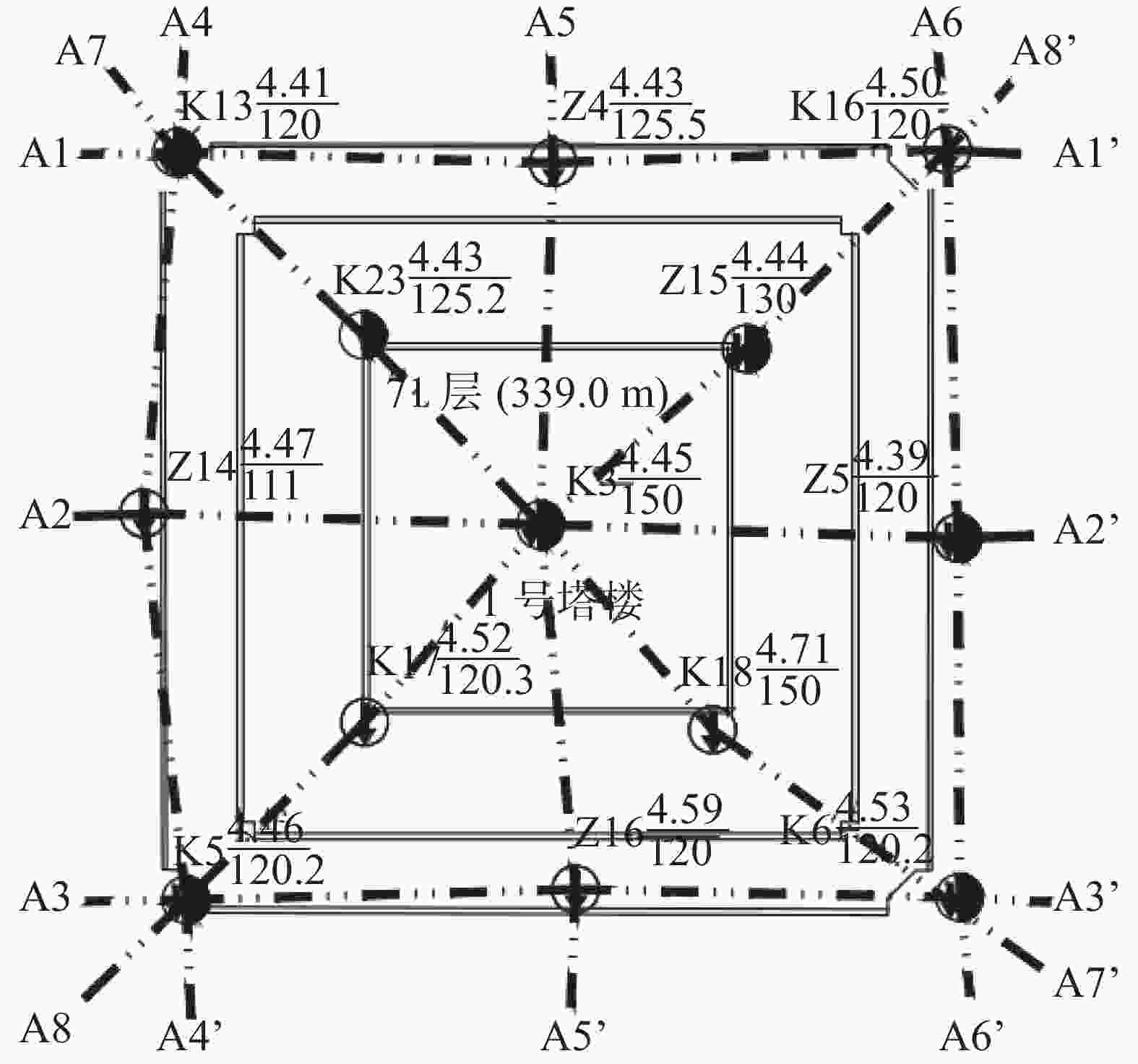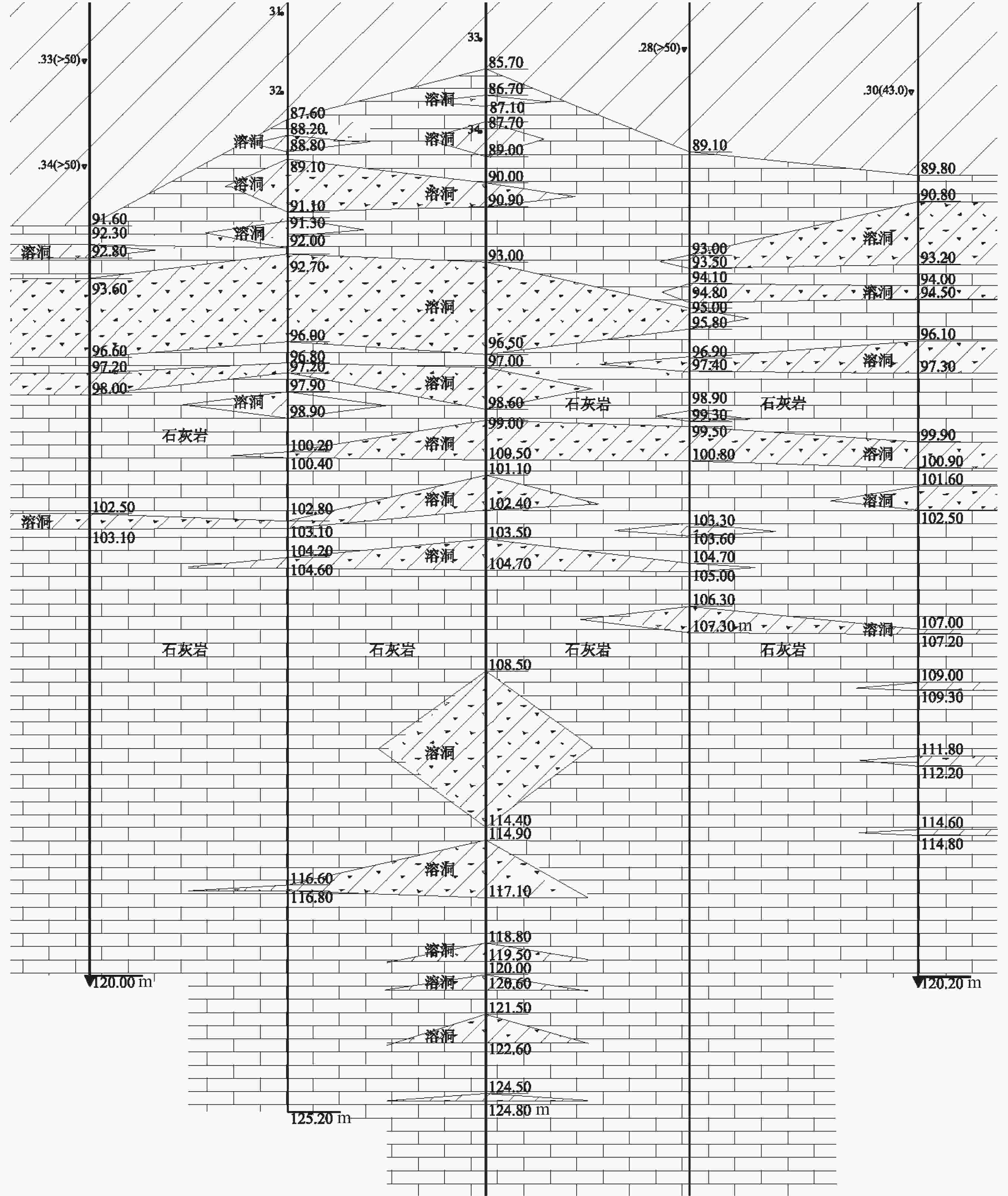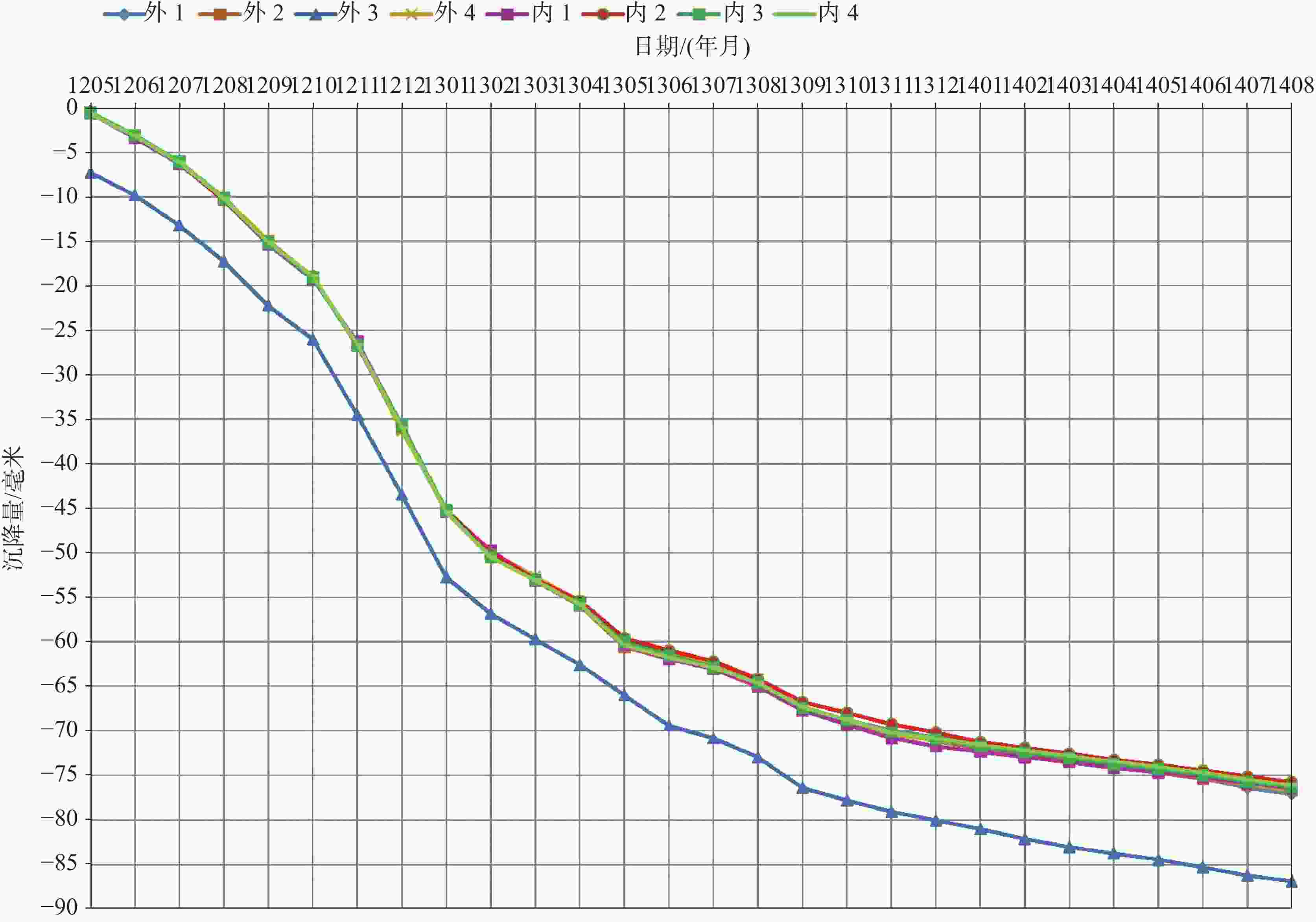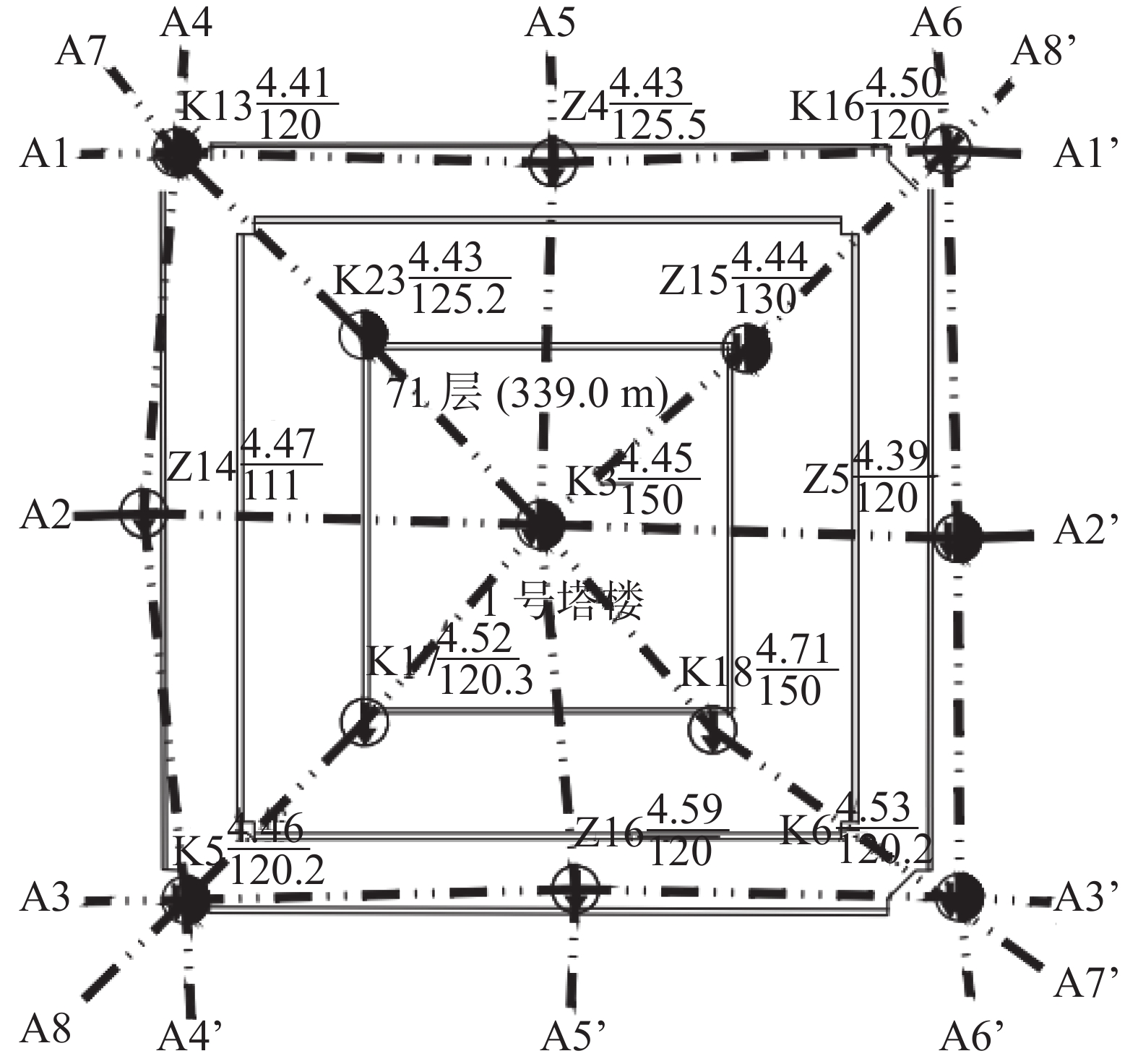Case study on super high-rise foundation design of the deep-buried beaded karst cave
-
摘要: 超高层建筑对地基稳定性、地基承载力和地基变形的要求非常高。2007年某市拟建超高层建筑,详勘揭露地表80 m以下地层中分布深埋串珠状溶洞,溶洞顶板厚度薄,串珠状溶洞在水平方向和垂直方向的分布情况及连通性等方面的不确定性较多,若建筑基础浅埋,则地基承载力无法满足设计要求;若建筑基础深埋,则因套管回收及溶洞处理等问题施工的可行性差。设计原则最终确定为基础浅埋方案,首先初步确定满足地基稳定性的前提条件,随后工程设计及施工各专业围绕单桩承载力问题进行讨论并修改专业方案,最终决定应用当时的创新工艺−灌注桩后注浆工艺解决单桩承载力问题。该工程终于在2010年得以推进。工程一期建成后平均沉降与不均匀沉降均很好地满足了规范要求。此次多专业技术联动是勘察设计施工技术一体化的一次成功尝试,相比目前质量进度管理一体化更具前瞻性,也是今后技术优化一体化的发展方向。Abstract:
In 2007, a super high-rise building was proposed in a city. A detailed survey revealed the distribution of deep-buried beaded karst cave in the stratum under the surface of 80 meters. The construction of the proposed super high-rise building highly requires foundation stability, bearing capacity and deformation. The geological conditions of the site are complex because the site is irregularly distributed with deep-buried beaded karst caves with thin roofs in multiple layer. Geophysical exploration was conducted to prove that the burial depth of karst caves is likely to be deepened. There are many uncertainties in the horizontal and vertical distribution and connectivity of beaded karst caves. Because of the deep burial depth, the situation of groundwater cannot be accurately identified. If the foundation is shallowly buried and meets the demand of stability, its bearing capacity will not satisfy the requirement. Besides, the effective pile length is very limited, and the bearing capacity of a single pile cannot meet the design requirements. If the foundation is deeply buried, foundation piles will be fixed crossing the karst cave in each layer and entering the lower stable bedrock. Before design and construction, the construction survey should be conducted pile by pile, and foundation treatment such as grouting should be carried out for the karst cave in each layer within the range of pile shaft. However, the site survey has indicated that the recovery of 80-meter casing pipe was very difficult and even impossible for many pipes. The indeterminacy in vertical and horizontal distribution and in connectivity of karst caves was relatively large, leading to the inaccurate estimation of grouting volume, poor construction feasibility, and unavailability of managed cost. In order to address the indeterminacy of karst cave distribution—the biggest construction difficult, the shallow-buried design principle of the foundation was finally determined. According to the idea that the foundation should be shallowly buried and meet the requirement of bearing capacity as well, in the aspect of survey, the precondition for the foundation stability requirement—the deepest burial depth of each unit—was preliminary determined. Based on the distribution characteristics of karst caves, roof thicknesses and cavity distribution depths of different units, the survey was carried out by qualitative method and semi-quantitative method. It was also recommended to transform the foundation stability problem into an uneven foundation problem according to the normative framework. In terms of structural design, the foundation stability scheme was further defined through calculation, and accordingly the structure was redesigned to determine the structure model. From the perspective of architectural design, the professional scheme was revised to reduce the burial depth of the basement from the original 20 m to 12 m according to the shallow burial depth. The difficulty of shallow-buried scheme was focused on the bearing capacity of a single pile, and hence this problem was discussed in terms of architectural design. In order to reduce the bearing capacity of a single pile, the team for architectural design decided to use steel structure frame to reduce the upper load. In terms of structural design, the steel-framed shear wall and light-weight partition wall were used to reduce the wall thickness and structural dead weight and other loads. Two layers of reinforcement were adopted to increase the overall structural stiffness so as to control the uneven settlement. Although the design scheme was revised repeatedly to minimize the bearing capacity of a single pile, it still could not meet the design requirements; consequently, the construction was postponed. In order to successfully solve the problem of bearing capacity of a single pile, we visited the survey expert for foundation scheme and were recommended the new process of post-grouting for cast-in-place piles, which was still an innovation in 2007. In this process, the grouting of pile ends and pile sides after piling reinforces the soil around the ends and sides, and thus effectively increasing their resistance. In this way, this process greatly improved the bearing capacity of a single pile, and at the same time controlled the uneven settlement. The project of super high-rise building was finally carried forward in 2010. After the first phase of the project was completed, the average settlement and uneven settlement of Tower I well met the design requirements according to the settlement observation data during and after the construction. This complex project involved multi-disciplinary technical linkage including the deep integration of professional expertise from architectural design, survey, structural design and construction, which is a successful attempt on technology integration of survey, design and construction. Compared with the current integration of management progress, this technology is more complex and forward-looking. It is not only an innovation in the construction management process, but also shows a development direction for the future integration of technology optimization. -
表 1 拟建建筑物物性质表
Table 1. Subgrade properties of the proposed building
拟建
建筑物结构
类型层数
/层尺寸
/m×m基础
形式基础
埋深/m差异
沉降/mm塔楼一 框筒
剪力墙71层 57×57 桩筏 20 <0.002 塔楼二 框筒
剪力墙37层 48×33 桩筏 20 <0.002 塔楼三 框筒
剪力墙21层 54×32 桩筏 20 <0.002 大地库 框架 4层 桩筏 20 / 表 2 土层分布及性质
Table 2. Distribution and property of the soil layer
层
序土层
名称层顶埋深
/m双桥静探
锥尖/侧壁标
贯波
速MPa·kPa−1 击 m·s−1 ② 粉质黏土 1.5~2.5 1.23/61.61 8.5 160 ③ 粉质黏土 5.5~7.0 1.32/37.54 8.2 178 ④ 粉质黏土 8.5~10.5 1.16/22.23 5.5 178 ⑤1 粉质黏土 13.5~15.5 2.10/74.27 12.6 231 ⑤2 黏土 17.5~19.0 2.51/116.7 16.7 262 ⑥t 粉土 22.0~25.0 5.31/92.18 16.1 248 ⑥ 粉质黏土 23.0~26.0 2.15/68.79 14.3 267 ⑦1 粉质黏土 28.0~30.0 1.44/30.82 7.6 233 ⑦2 粉质黏土 33.0~35.0 1.29/37.51 6.7 233 ⑧ 粉质黏土 38.0~40.0 2.32/78.25 15.2 320 ⑧t 粉土 41.5~44.0 8.51/111.1 21.5 310 ⑨ 粉土 50.0~52.0 7.90/167.7 28.1 336 ⑩ 黏土 55.0~57.0 3.71/140.3 22.2 341 ⑾1-1 粉土 60.0~62.0 10.3/202.9 30.9 396 ⑾1-2 粉质黏土 60.0~65.0 4.54/111.7 20.4 425 ⑾2 粉质黏土 69.0~71.0 3.24/81.95 18.0 589 ⑿ 黏土 75.0~77.0 5.81/151.8 36.7 612 表 3 三塔楼空洞分布
Table 3. Cavity distribution of three towers
编号 孔号 埋深范围/m 厚度/m 塔楼一 K17 104.5~105.6 1.1 Z4 102.1~103.7 1.6 K5 101.0~102.6 1.6 Z4 101.7~105.8 4.1 塔楼二 Z10 82.3~83.3 1.0 塔楼三 K21
(3处)108.5~109.7 1.2 109.9~113.5 3.6 113.7~116.4 2.7 Z12 97.8~99.2 1.4 表 4 三塔楼塌落高度
Table 4. Collapse height of three towers
编号 塌落前洞体
最大高度/m塌落
高度/m建议基础
埋深/m塔楼一 1.1~4.1 5.5~20.5 ≤81 塔楼二 1.0 5.0 ≤77 塔楼三 1.2~3.6 6.0~18.0 ≤79 -
[1] 王文波. 岩土工程勘察设计和施工一体化模式探讨[J]. 施工, 2021(2):180-182.WANG Wenbo. Discussion on integrated mode of geotechnical engineering investigation, design and construction[J]. Construction, 2021(2):180-182. [2] 廖斌. 探究岩土工程勘察设计与施工一体化的实现途径[J]. 绿色环保建材, 2018(7):103-105.LIAO Bin. Explore the way to implement the integrated model of geotechnical engineering investigation, design and construction[J]. Green Environmental Protection Building Materials, 2018(7):103-105. [3] 谢晋. 岩土工程勘察设计与施工一体化模式探讨[J]. 低碳世界, 2014(23):199-200.XIE Jin. Discussion on integrated mode of geotechnical engineering investigation, design and construction[J]. Low Carbon World, 2014(23):199-200. [4] GBT51238-2018, 岩溶地区建筑地基基础技术标准[S]. 2018.GBT51238-2018. Technical standard for building foundation in karst area[S]. 2018. [5] 彭涛, 李耀刚, 武威, 郭印. 深埋型岩溶勘察中的地球物理勘探技术[J]. 中国地球物理, 2009(5):293-294.PENG Tao, LI Yaogang, WU Wei, GUO Yin. Applications of geophysical exploration in deeply buried karst investigation[J]. The Chinese Geophysics, 2009(5):293-294. [6] DBJ45/024-2016, 岩溶地区建筑地基基础设计规范[S]. 2016DBJ45/024-2016. Code for design of building foundation in karst area[S]. 2016. [7] 吴明鑫, 李伍平. 溶洞地基稳定性模糊综合评价法综述[J]. 长春工程学院学报(自然科学版), 2012, 13(1):39-42.WU Mingxin, LI Wuping. Fuzzy synthetic evaluation on the stability of foundation to karst cave[J]. Journal of Changchun Institute of Technology (Natural Sciences Edition), 2012, 13(1):39-42. [8] 赵博超, 朱蓓, 王弘元, 赖柄霖. 浅谈岩溶塌陷的影响因素与模型研究[J]. 中国岩溶, 2015, 34(5):515-521.ZHAO Bochao, ZHU Bei, WANG Hongyuan, LAI Binglin. Influence factors and mathematical models of karst collapses[J]. Carsologica Sinica, 2015, 34(5):515-521. [9] 李飞飞, 牛真茹. 东黄山国际小镇串珠状隐伏溶洞顶板稳定性研究[J]. 城市勘测, 2021(5):193-197.LI Feifei, NIU Zhenru. Study on the roof stability of beaded hidden cave in Donghuangshan International town[J]. Urban Geotechnical Investigation & Surveying, 2021(5):193-197. [10] 牟春梅. 岩溶区地基岩体溶洞顶板稳定性评价[J]. 西部探矿工程, 2002, 77(4):33-36.MOU Chunmei. A evaluating on the stability of caves roof in karst areas[J]. West-China Exploration Engineering, 2002, 77(4):33-36. [11] 高培德, 王林峰. 覆盖型岩溶塌陷的塌陷机制分析[J]. 中国岩溶, 2017, 36(6):770-776.GAO Peide, WANG Linfeng. Analysis of collapse mechanism for mantled karst collapse[J]. Carsologica Sinica, 2017, 36(6):770-776. [12] 王建秀, 杨立中, 刘丹, 何静. 覆盖性无填充溶洞薄顶板塌陷稳定性研究[J]. 中国岩溶, 2000, 19(1):65-72.WANG Jianxiu, YANG Lizhong, Liu Dan, HE Jing. A discussion on the karst collapse evolution of the karst caves covered with thin rocky roof[J]. Carsologica Sinica, 2000, 19(1):65-72. [13] 赵明华, 陈言章, 肖尧, 杨超炜. 非均布路基荷载下溶洞顶板稳定性分析[J]. 水文地质工程地质, 2018, 45(2): 36-43.ZHAO Minghua, CHEN Yanzhang, XIAO Yao, YANG Chaowei. Stability analysis of the karst roof under the non-uniform subgrade load[J]. 2018, 45(2): 36-43. [14] 张贝贝, 伍廷亮, 王玉松, 晋明超. 贵阳某隐伏横向溶洞地基处理稳定性分析[J]. 工业建筑, 2022, 52(4):133-139.ZHANG Beibei, WU Tingliang, WANG Yusong, JIN Mingchao. Stability analysis on foundation treatment for a transverse karst cave in Guiyang[J]. Industrial Construction, 2022, 52(4):133-139. [15] 黎斌, 范秋雁, 秦凤荣. 岩溶地区溶洞顶板稳定性分析[J]. 岩石力学与工程学报, 2002, 21(4):532-536.LI Bin, FAN Qiuyan, QIN Fengrong. Analysis on roof stability of karst cave in karst areas[J]. Chinese Journal of Rock Mechanics and Engineering, 2002, 21(4):532-536. [16] GB 50021-2001(2009年版) , 岩土工程勘察规范[S]. 2009.GB 50021-2001(2009 edition). Code for investigation of geotechnical engineering[S]. 2009. [17] GB 50007-2011, 建筑地基基础设计规范[S]. 2011.GB 50007-2011. Code for design of building foundation[S]. 2011. [18] JGJ94-2008, 建筑桩基技术规范[S]. 2008.JGJ94-2008. Technical code for building pile foundations [S]. 2008. -





 下载:
下载:




